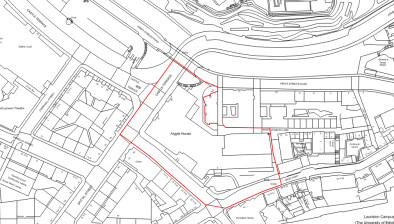Malcolm Fraser criticises current procurement model as ‘PPP lite’

Architect Malcolm Fraser has called for the procurement of school buildings to be returned to Scotland’s councils amid growing criticism of funding deals following the Edinburgh schools crisis.
The City of Edinburgh Council ordered the closure of 17 schools on Friday after the private consortium behind the construction and maintenance of the schools, the Edinburgh Schools Partnership (ESP), admitted that it cannot guarantee the safety the buildings.
Structural faults have been detected in some of the buildings, which were all built under the first round of public-private partnerships (PPP).
Set up to replace the private finance initiative (PFI), the public-private partnership (PPP) model was then scrapped by the SNP government in 2008 and replaced with the non-profit distributing (NPD) Scottish Futures Trust (SFT), an independent company.
Thousands of pupils in Edinburgh are still unable to return to classrooms as contractors continue to carry out safety checks on schools.
Now leading architect Malcolm Fraser joined calls for councils to be given direct control of commissioning school building projects, branding the current funding setup as “PPP lite”.
Mr Fraser, who quit as deputy chairman of Scotland’s design watchdog in 2007 in protest over poor quality PFI schools, said he remained concerned with the current financing model.
He told The Scotsman: “I’m not happy with it. In many respects it’s just PPP lite and I think the Scottish Government’s Hub contracts for the provision of public buildings are really concerning, too.
“They are dividing the country up into mega regions and awarding monopolies to exactly the same big contractors which will probably end up being partly owned offshore.
“The correct way to do things is for local authorities to be empowered to commission good buildings and responsible for their delivery, instead of these bizarre financial deals.”
Mr Fraser said there had been “shoddiness” in the financial methods used to procure PPP schools, as well as in the level of design.
He added: “The whole industry, everyone realised these buildings were shoddy and they were shoddy in every sort of way - in terms of quality of the environment made for the children and financially they were unbelievably expensive and they were purely an ideological route, they were not good for the public purse, they were not good for education and we are seeing what has come out of that now.
“There was no care or concern going into the buildings themselves. Often good Victorian or even 1960s schools, like Craigmount was, were being replaced by inferior contemporary buildings and there was this vast financial and ideological pressure on councils to show they cared about children by spending money. And the government was very keen these complex financial models be used that enriched lawyers and bankers but impoverished the public built environment.”
Mr Fraser said government and local authorities could borrow cheaply and invest in new schools.
He said: “Instead the government borrowed on the never never, using these private deals and believed they were off balance sheet and they therefore didn’t need to show them in the balance of payments. Europe has subsequently ruled that’s not the case. So there was a narrow justification at the time that they didn’t need to show them in public borrowing, but that has since been proved false.
“All of this proves that the best thing the public sector can do is borrow, invest and control and not pass such important matters over to the private sector.”
And he criticised the way PFI operated, adding: “Things can go wrong on site under any method, but it is particular that this sort of method is one of self regulation. Contractors are trusted to police themselves, so in cases like this there is no independent engineer, no independent architect that are tasked to stand outside the process, inspect the work and ensure these sort of things don’t happen.”
Mr Fraser also spoke about the difficulty of carrying out checks on buildings, saying: “When everything is covered up it’s very hard to tell where these other problems might lie. You almost need to take a school to bits to find out that these issues are there. You don’t really understand there is a problem until something catastrophic goes wrong, as it has at Oxgangs which has led to all these other inspections.”
And he agreed other buildings could also have problems, adding: “Schools, hospitals, police stations - all sorts of public buildings came through this. There is a possibility in all sorts of directions.
“We should not necessarily say this means all PPP buildings are going to have problems. We can hope it is isolated to this particular contractor and these particular schools. But for me it is emblematic of the bigger issues when we cede responsibility to the private sector to provide vital public infrastructure.”
Fraser’s criticism comes after fellow architect Professor Alan Dunlop said he was worried that what had happened in Edinburgh is PPP “chickens coming home to roost” and Neil Baxter, secretary of RIAS, call for a return to traditional methods of procurement for major public buildings.
Barry White, chief executive of the SFT, said: “NPD is very different from PFI – it has seen improved procurement and better design through the use of reference designs worked up by the public sector.”

















